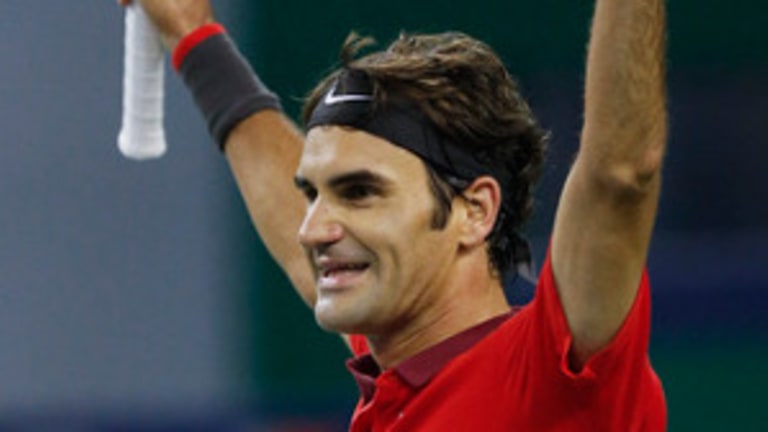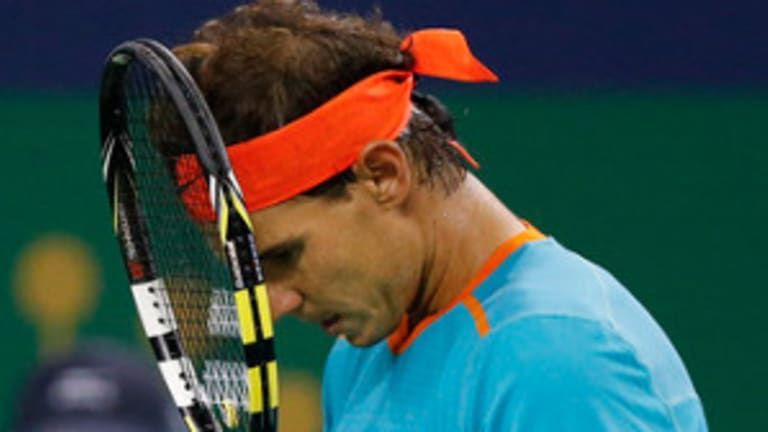There are two theories about the human appendix: One holds that the thin, four-inch tube below the intestines acts as a repository for “good bacteria,” the other that the appendage is a useless remnant from our evolutionary past. My own theory is that the purpose of Rafael Nadal’s appendix is to ensure that 2014 will go down as one of the most frustrating years of his career.
Nadal embarked upon the Shanghai Masters this week knowing that he has appendicitis, which occurs when the appendix becomes inflamed and ruptures, more or less exploding like, well, a Nadal forehand. Nadal was diagnosed last Sunday in Shanghai, and he hoped that a robust course of antibiotics could keep the developing condition under control as he played on.
“I’m not going to go for surgery,” he told the press in Shanghai on Tuesday, after spending Sunday and Monday resting in his hotel room. “That's great news for me today. That's why I'm here practicing for 45 minutes and trying to play tomorrow. But obviously I am not in my best condition.”
Nadal’s analysis was borne out today in his first match. Looking sluggish, the world No. 2 made twenty-seven unforced errors in the course of losing to fellow countryman Feliciano Lopez, 6-3, 7-6 (6).
Afterward, Nadal soberly explained, "For sure [I don't feel] perfect. It's the same way that I felt before. A little bit more dizzy now. But that's it. Nothing that I have to worry about. When you lose a match, it is not the moment to talk about obvious things. I lost. Feli played better than me."
This is more than a rare, de facto opening-round loss by Nadal. Coming into Shanghai, Nadal was ranked ahead of his Swiss rival Roger Federer by a scant 285 points in the rolling, 52-week rankings. Nadal was defending 360 semifinal points in Shanghai, which will now drop off his total and be replaced by a mere 45—leaving him behind Federer, who’s already equaled his third-round performance of 2013. Upshot: Federer will take over the No. 2 ranking from Nadal at the end of the week no matter what happens over the next few days.

